Avid MBOX Studio audio interface promises pro power in a desktop package
With a feature set that belies its compact size, the newest member of the MBOX family has been upgraded and expanded in every way. Could it be the ultimate interface for smaller studios?
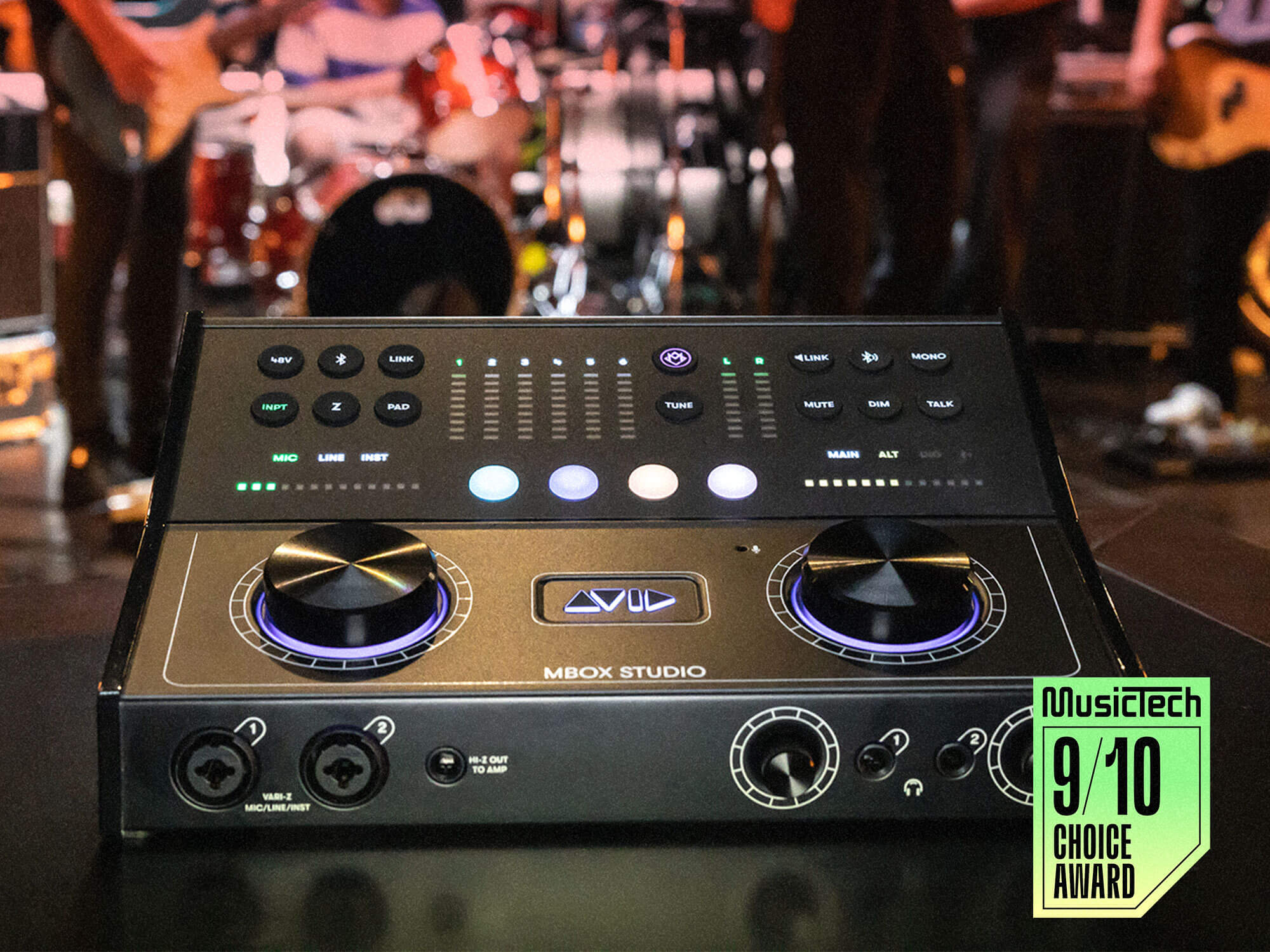
Review Overview
Our rating
9
Our verdict
⊕ Hardware is powerful but intuitive to use
⊕ Super flexible routing and recording options
⊕ Controller software reveals huge flexibility
⊕ Excellent results in everyday use
⊖ Expensive, if you’re not using all the features
Digidesign released the first MBOX audio interface in 2002, seemingly a lifetime ago in the technological landscape. It let you run Pro Tools, which at the time couldn’t be used with third-party interfaces, and as a result opened up the then-named ‘industry-standard’ DAW to a new generation of users. Fast-forward two decades and Avid’s MBOX Studio is a much weightier proposition both literally and figuratively, going far beyond the capabilities of its predecessors. So who is it for now?
READ MORE: The best audio interfaces to buy in 2023: 10 best interfaces under $250
Avid highlights the versatility of the interface for all manner of uses, from podcasting to high-end music production. And, while it is certainly capable of all these, the pricing and feature set suggest that the target demographic might be pro-grade producers. For sure, you can do simple tasks with it, but if that’s as far as you go, there are more affordable options.
In the MBOX
A surprisingly solid unit that’s clearly designed to sit on a desk rather than being carted around, MBOX’s hefty circuitry requires mains power via the bundled PSU rather than bus power. Connection to your computer is made with the supplied USB-C cable and there’s a USB-A adapter included, too.
Your registration code gets you access to the software, even if the initial sign-up process is a little tedious. You can register Pro Tools via iLok, a process that frustratingly didn’t work in Safari on macOS but did in Firefox. You get a year’s subscription to Pro Tools Studio (valued at £249) which includes over 100 AAX-format plug-ins and various other goodies. Of course, the interface works with any DAW so you’re not compelled to renew if you don’t want to stick with Pro Tools.
Heavy hitter
MBOX packs in a serious amount of I/O. On the front side are two XLR/jack combo sockets with variable impedance (Z), plus a further two on the rear. Also on the front is a Hi-Z re-amp output with ground lift, and two headphone outputs with individual-level controls. Input channels 5 and 6 are quarter-inch jacks, while effects send and return loops double as two additional line outs/ins respectively.
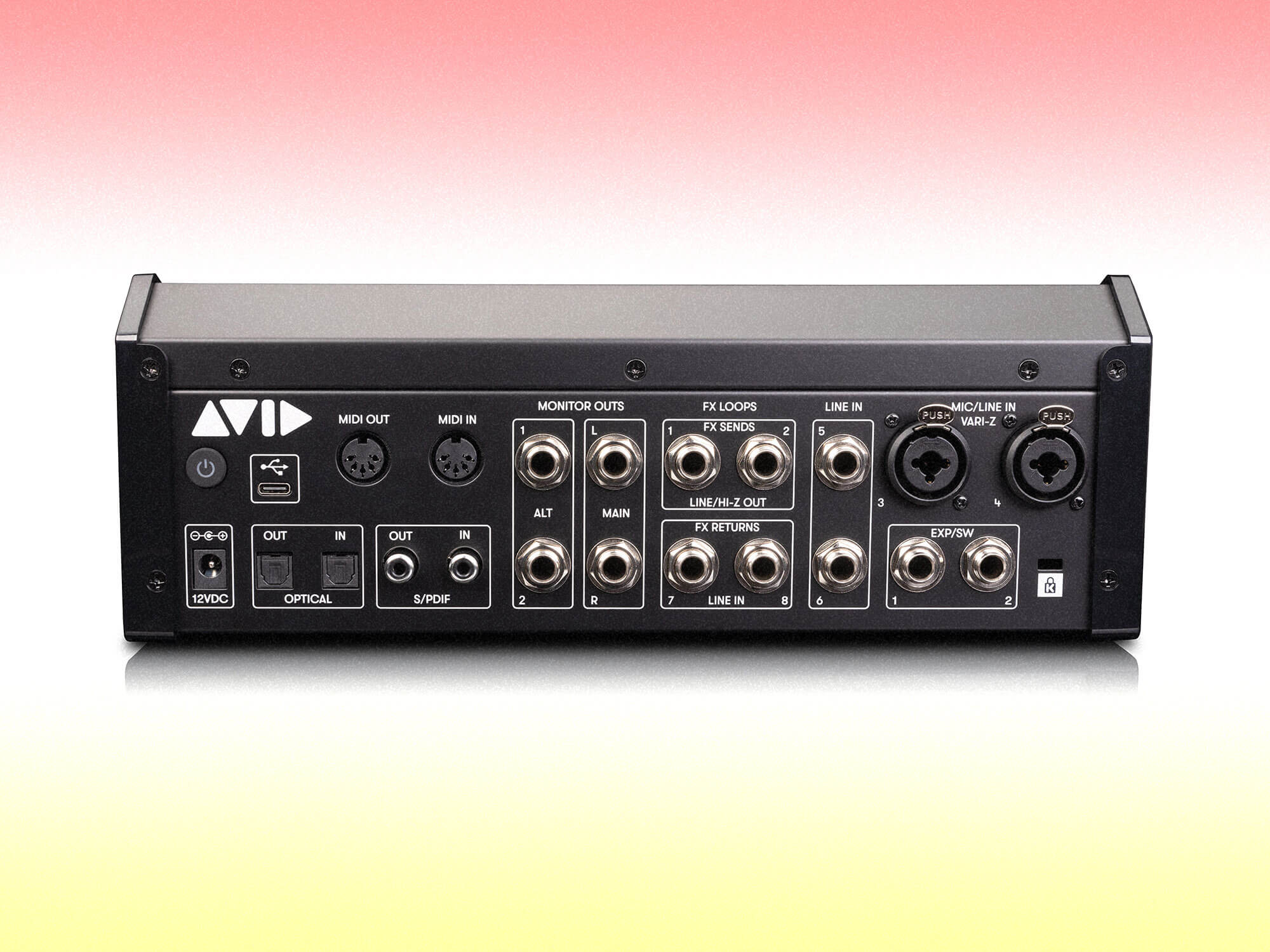
There’s S/PDIF in and out, dual expression/footswitch inputs and a further eight channels of optical I/O via ADAT, plus two sets of monitor outs, equating a grand total of 21 ins and 22 outs; a truly impressive capacity. Monitor mixing capabilities in particular are excellent and very flexible. Full-size MIDI sockets on the back let you connect other studio gear and the interface is actually also capable of working in standalone mode without a computer being present – it will still route audio.
The top panel is dominated by two large rotary encoders and is relatively pared down, with much of the customisation taking place in software – more on that shortly. Though lacking any kind of LCD screen, it makes use of backlit buttons and a system of multiple presses to give visual feedback and make clear what you’re changing. Press, hold and turn the left encoder for example to select an input channel, then turn again to set its gain; single-press it to select between mic or line inputs.
Studio tools
On the right-hand side, physical buttons for common recording tasks can be found including mute and dim for the main output, and a Talk button to activate the built-in talkback mic. There’s also Bluetooth built in. You can stream audio from a phone or iPad, plus send mixes out through wireless headphones or to Bluetooth speakers (with the caveat that some data compression will be applied).
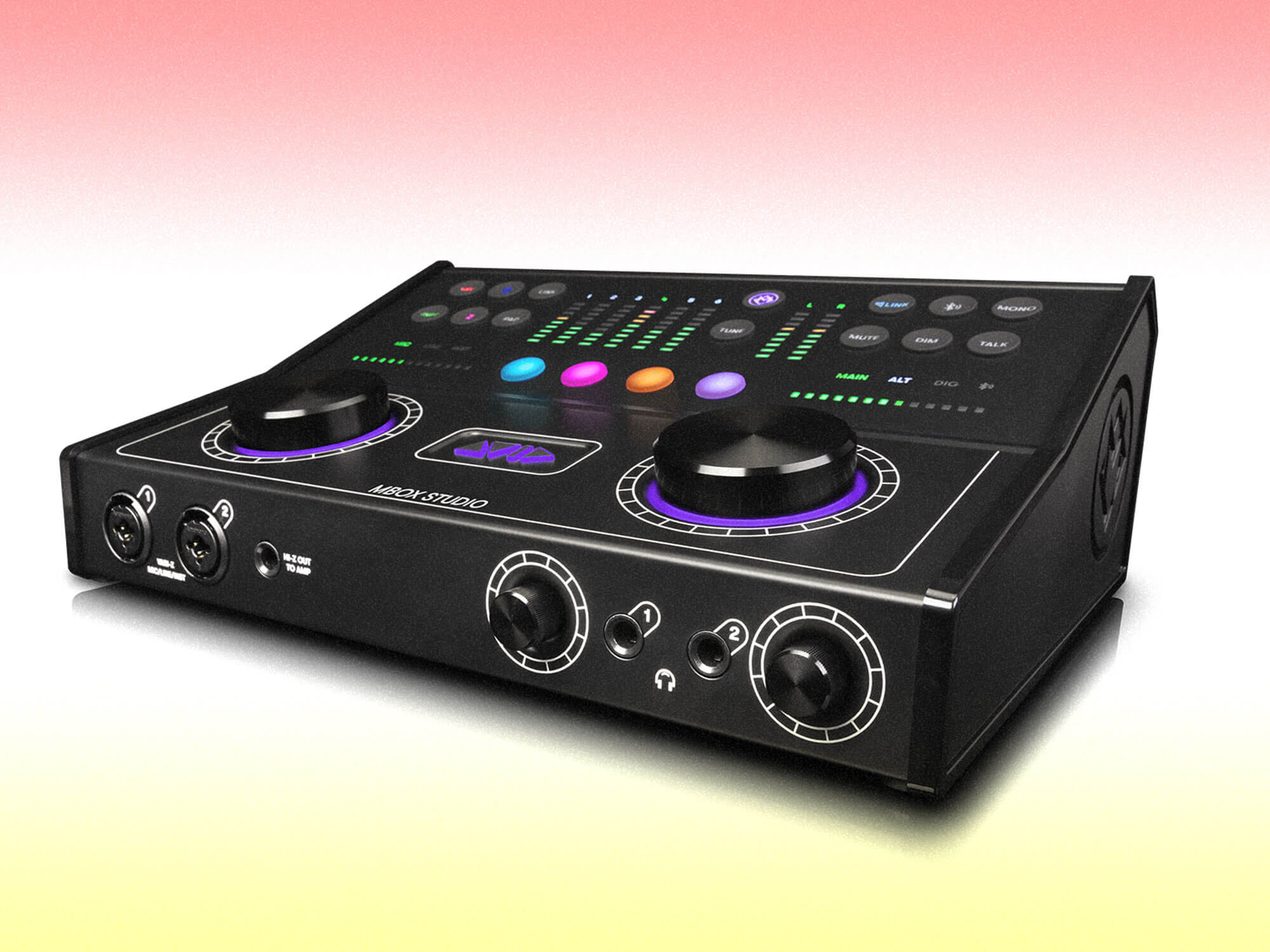
Loopback is also available for mixing audio from your computer in with other signals. Guitarists are unexpectedly well-catered for; in addition to the Hi-Z capabilities, pressing the Tune button invokes a guitar tuner which uses the light display on the top as well as in the app – a nice touch.
The interface is pretty intuitive to use, however opening the MBOX Control app reveals a whole new world of options. Each section is accessible in detail and, conveniently, the app can even be opened using a button on the interface’s top panel. Presets are available so you can quickly call up different configurations of routings. The unit’s DSP-powered effects comprise reverb, EQ and delay, and the onboard processor also enables extremely low-latency monitoring even when running at the higher 24-bit/192kHz quality it’s capable of. As you’d expect, making changes on the hardware will also show up in the software, and the footswitch behaviours can also be configured from the app.
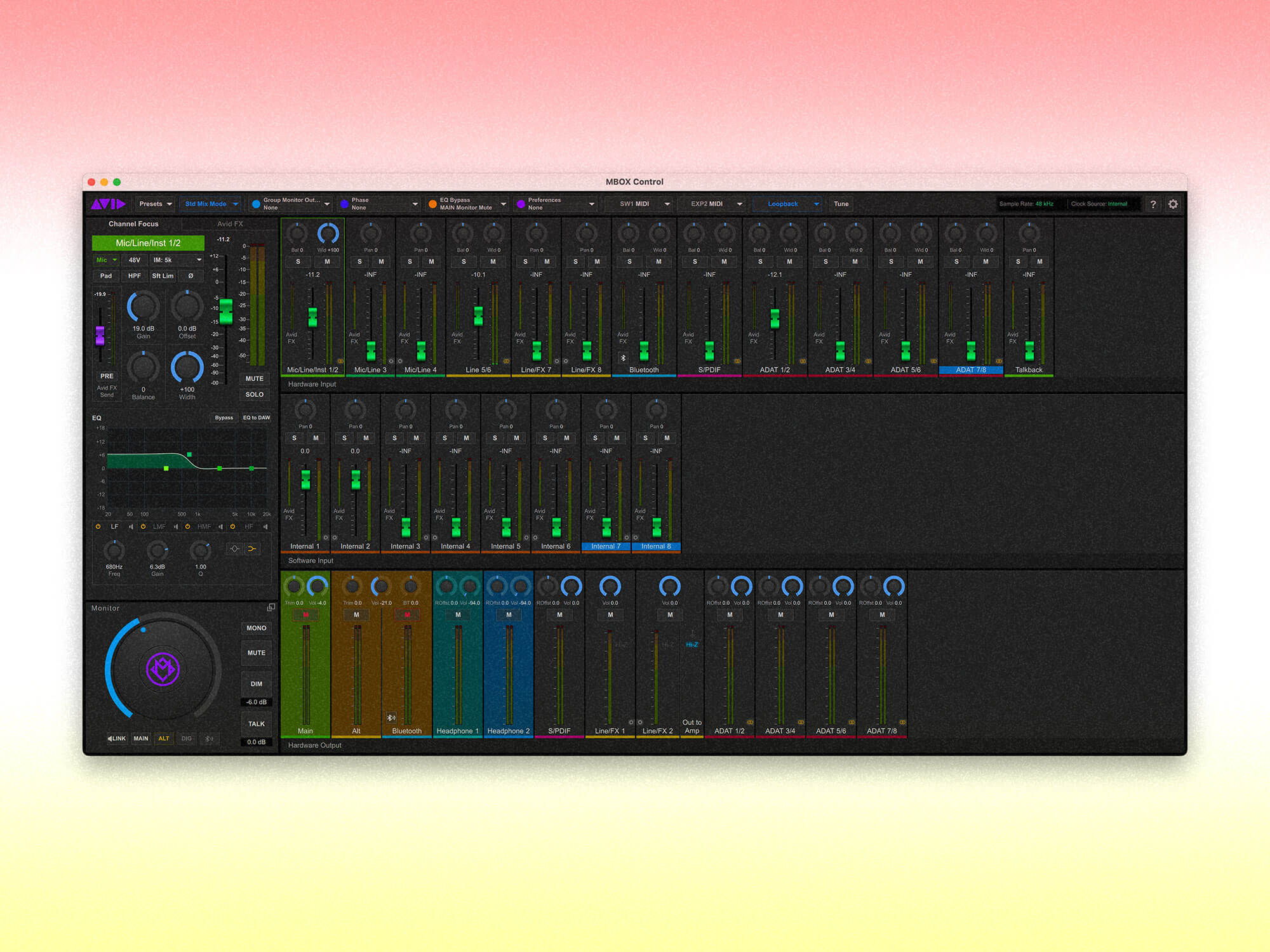
The four buttons at the centre of the interface are both ergonomic and programmable. These can be set up using the menus at the top of the app’s window to control a range of parameters from solo and mute of any source, to bypassing effects or even opening app windows. In fact, they have both a press and a hold action, so you actually get eight possible commands – useful for shortcutting to things you need to do regularly.
Power player
Unsurprisingly, the recorded results produced by the MBOX Studio are excellent, delivering crystal clear takes at the highest quality – including while using the onboard effects with negligible latency. In terms of inputs, pretty much all formats you might need are covered, both analogue and digital; linking and routing channels is also easy to do. While there’s no screen on the MBOX, the workflow is intuitive and you’ll find your way around fairly quickly. Actions become familiar and the system of presses, turns and lights works well in practice.
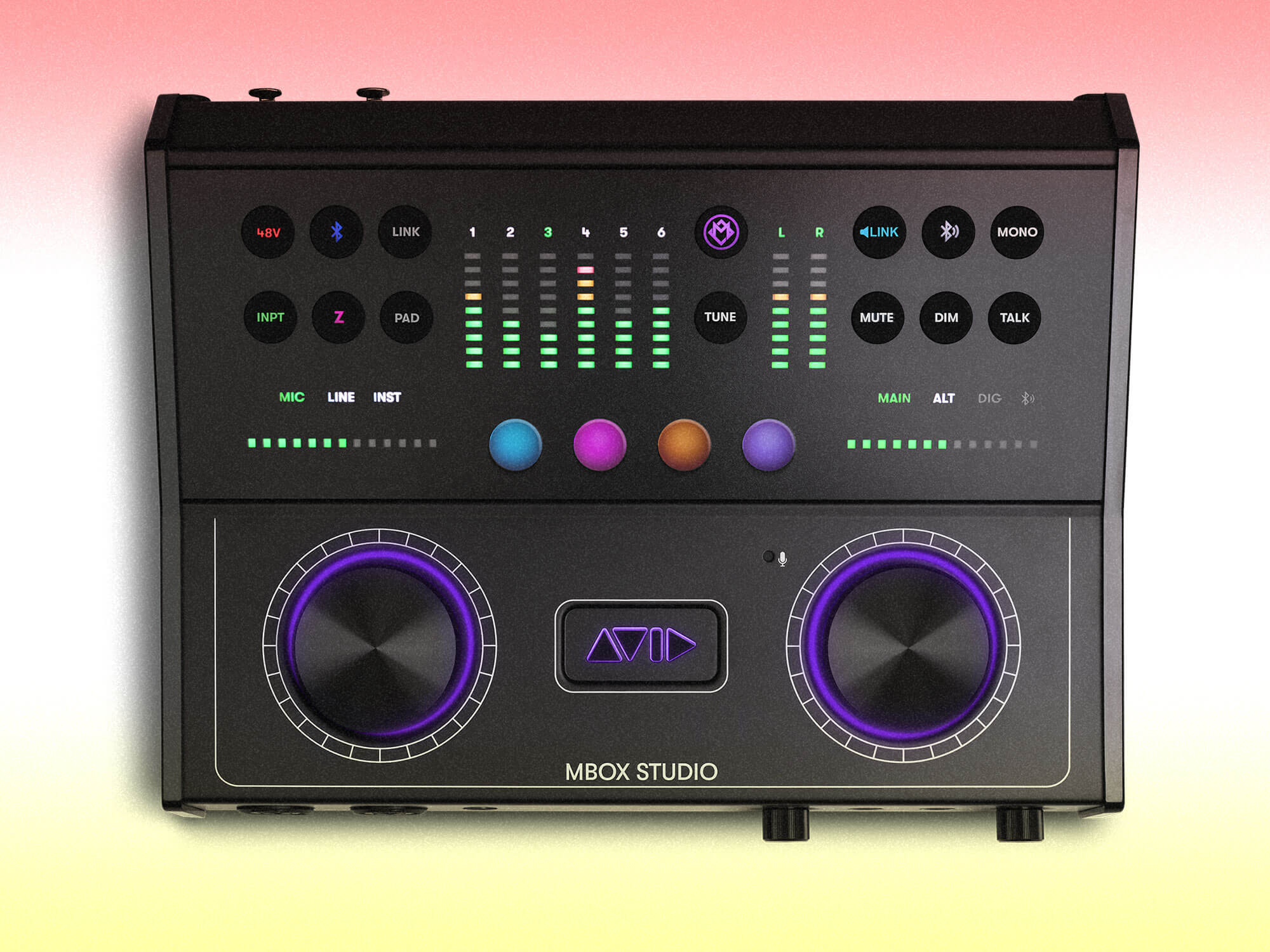
For more advanced control, the companion application is well thought-out and powerful, and you’ll likely find yourself using it in tandem with hardware controls, dipping back into the software to make tweaks or call up presets.
As noted earlier, it is of course capable of facilitating things like podcasts or live streams, though the price is probably overkill for these relatively simple tasks. Step up a gear to music tracking, however – or multimedia recording from various source types – and this thing really shines. The MBOX Studio fits a huge amount into its compact frame and would be a fitting centrepiece of any studio setup.
Avid MBOX Studio is available now for £879/$899 at avid.com
Key features
2-in / 22-out USB audio and MIDI interface
Multi-format physical and virtual I/O
Hi-Z ins and outs for guitarists, plus a tuner
Loopback feature for podcasting
Standalone monitor controller functionality
Integrated talkback mic
2 programmable footswitch / expression pedal inputs
4 assignable soft buttons
2 headphone outputs
1-year subscription to Pro Tools and software bundle